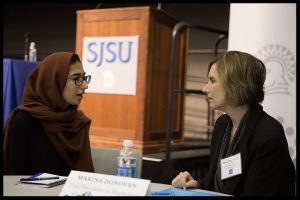Most instructors use exams of some kind to determine how well students are mastering course content and achieving course objectives. Many lament what they perceive to be underdeveloped test preparation strategies and unrealistic expectations displayed by a large swath of their students. Below, we lay out a number of techniques and activities you might consider implementing before and after your tests, to help students become better self-directed learners.
- Before the test…
A great deal of research in the learning sciences indicates that students who engage in regular (weekly) mock-self-testing do better on the “real” tests than their peers who put in as many hours studying in ways that do not include a self-assessment component. The self-testing allows learners to monitor their mastery of the material and also allows them to learn how to call forth the material they have learned. This advantage is equally significant, whether students work alone or in pairs/with peers.
- Consider encouraging your students to add this sort of regular practice activity into their study routine.
- Consider creating quizzes or prompts that students can use to monitor their mastery of the material as they encounter it throughout the semester. Be sure that the kind of processing of the materials required to answer the questions or problems you provide matches what you expect students to be able to do on your actual tests.
In our own workshops focused on helping faculty assist their students as they develop an effective approach to studying and test prep, we refer to “the 3 M’s”:
- Building students’ metacognitive awareness: Encouraging students to examine closely what they know and what they have yet to master, how they know that they know it (or not) and how accurately they can assess whether their command of the material is going to be sufficient for the way they are going to have to show or use it.
- Pausing regularly in class — to make time to solve sample problems, to articulate and defend one’s opinions about course material, and to practice explaining course material in low-stakes contexts such as small-group discussions — can be quite helpful.
- Allowing a few minutes at the end of class for students to review their notes, or leveraging the discussion feature of the course learning management system can also help students identify insights or points of confusion.
- Helping student master the mechanics of studying: Encouraging them to develop and use study strategies that work for them, as they strive to understand, manipulate, memorize, organize and use the material.
- As your expectations of what students should be capable of increase in complexity (from mastering terminology and remembering facts to being able to analyze, integrate and apply information in new and creative ways), it will become increasingly necessary for them to move beyond the rote memorization and simple recall strategies that may have served them well at earlier points in their education.
- Demonstrating and then having them practice techniques for creating graphic organizers or other ways of actively representing material in ways that are personally meaningful for them can be time well spent.
- Providing students with an accurate picture of the kinds of questions or problems they will need to be prepared to answer will help them recognize the kinds of study strategies they will need to develop and deploy to be sufficiently prepared.
- Helping students develop or sustain the motivation to dig in: Creating a context where students will strive and persevere even (especially?) when they have struggled with the material. Here, consider
- decisions faculty make as they set up their courses (e.g., opportunities for do-overs, absolute grading scales vs. grading on a curve, formats in which students might display their command of the material) as well as
- dispositions and attitudes students bring “to the table” (e.g., confidence, grit, resilience, and a growth-vs.-fixed mindset.)
- After the test…
Research also demonstrates the value of taking time after the test has been returned to reflect honestly and in detail about
- how one studied prior to the test,
- where one did well or missed questions on the test,
- what the answers to these questions suggest about how to adjust one’s approach to studying, and
- and what kinds of resources and support, if any, might be useful, moving forward (e.g., attending faculty office hours, tutoring, study-buddies, assistance developing study or time-management skills, etc..).
Such “exam wrapper” tools abound. One particularly thorough version is available at the Duquesne University Center for Teaching Excellence (http://www.duq.edu/about/centers-and-institutes/center-for-teaching-excellence/teaching-and-learning/exam-wrappers). Consider requiring that students complete an exam-wrapper assignment. Once they have completed it, have them refer to it periodically. And have them bring it with them to office hours, if and when you meet with them to discuss their work in your class.
We invite you to peruse the list of student success services and workshops available through SJSU’s Peer Connections (http://peerconnections.sjsu.edu/) programs. And please add your own strategies using the comment link below.
